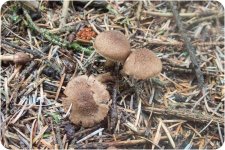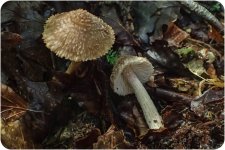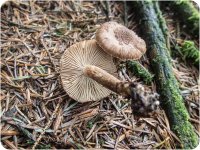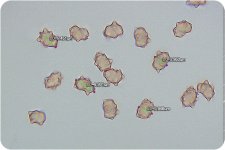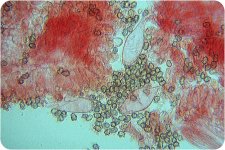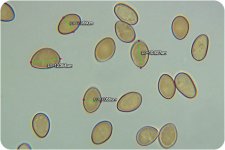I found these on consecutive days. The first was in a conifer wood and seeing the spores were knobbly narrowed it down to perhaps Inocybe langinosa. I found the next in a beech wood and at first thought it was the same. On a closer look however it looked different and had smooth spores. Both ahd a brown spore print. Is the last one an Inocybe as well, because can't seem to find a match for it.
Thanks!
Colin
Thanks!
Colin




